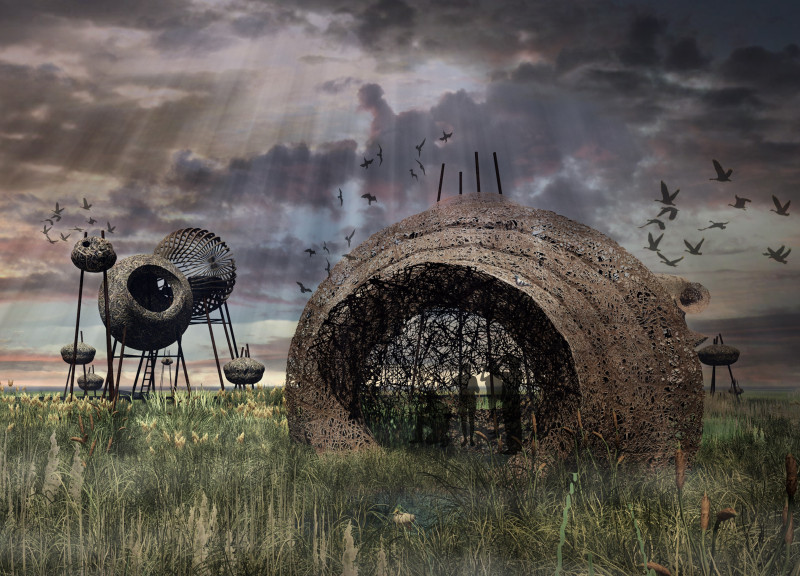5 key facts about this project
“An Avian Playground” explores the relationship between humans and birds in a wetland environment. The design focuses on providing an experience that values the journey over a specific destination. Drawing from the study of birds, the project invites visitors to engage deeply with nature and observe avian behavior through carefully designed spaces.
Design Concept
The project moves away from traditional architectural forms. It replaces the idea of a tall Tower with a series of flexible, woven pods placed along an integrated pathway. This layout allows for varying experiences and interactions. The pods serve as observation points for people and nesting spaces for birds, emphasizing coexistence in a shared environment.
Walkway Integration
A prominent feature is the lightweight steel grid walkway. This pathway connects the different elements of the design while minimizing its impact on the landscape. Supported by slender steel posts, the walkway floats above the existing vegetation, allowing plants to thrive without disturbance. Visitors can walk through the wetland area while maintaining a respectful distance from the natural ecosystem.
Pod Design
The pods are designed to enhance observation and appreciation of bird life. The 360 Pod provides sweeping views, ideal for birdwatching. The Sky Pod serves as a cozy spot for individual observation, offering an open-air space for gathering and discussion. In contrast, the Water Pod is partially submerged, inviting visitors to get closer to the water and experience the habitat in a new way.
Materials and Aesthetics
Steel and timber are used thoughtfully throughout the design. Steel provides the necessary support for the walkway and pods while keeping the overall structure lightweight and unobtrusive. Timber frames the pods and is complemented by woven timber wattle, creating a natural look that blends with the surroundings. This choice of materials reflects a commitment to sustainability and respect for the environment.
The arrangement of pods and pathways fosters both connection and observation. They not only serve as venues for human activity but also support the local bird population, highlighting a design that balances human needs with ecological preservation.
























